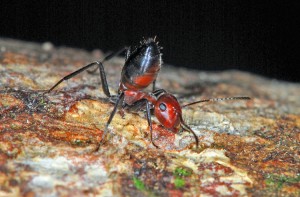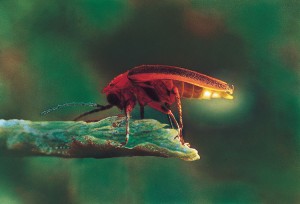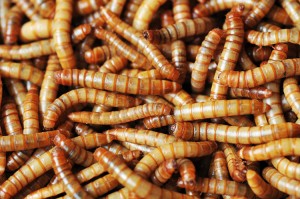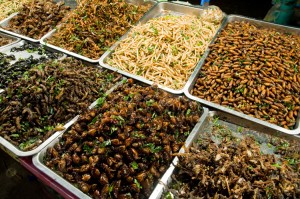Exploding Ants!
Friday, May 18th, 2018May 18, 2018
In Southeast Asia, a newly identified ant species has a unique defense mechanism: it explodes! When threatened, or when in the grips of an enemy insect, the new tree-dwelling ant species Colobopsis explodens bursts toxic yellow goo from its abdomen, killing or chasing off its attacker. The ant dies in the effort, but it is an effective way of defending the colony.

A worker Colobopsis explodens ant strikes a formidable defensive pose. Credit: © Alexey Kopchinskiy, Pensoft Publishers
The self-sacrifice of the Colobopsis explodens ant may sound drastic, but it is not uncommon in the insect world. Many bees die after stinging an attacker, and certain aphids, termites, and other ants also practice autothysis—the act of self-sacrifice through explosion.
Ant colonies differ enormously in size. A colony may have a dozen, hundreds, thousands, or in rare cases, even millions of members. A colony usually has one or more queens. Ant queens are females whose chief job is to lay eggs. An ant colony also includes the ant young or larvae. Male ants, who have wings, live in the colony only at certain times of the year. Their only job is to mate with young queens, who also have wings. The rest of the colony consists mostly of workers. These wingless female ants do not lay fertile eggs but instead build the nest, search for food, care for the queen and the young, and protect the colony. Unlike queens, workers commonly leave the nest and can often be seen walking about on the ground or in trees.
The small, reddish-brown Colobopsis explodens workers are the ones who give themselves up for the good of the colony. During combat, the worker ant bites down on the enemy, lifts its lower body, and contracts its muscles so hard that its skin splits open, releasing sticky, toxic fluid from its abdomen. The explosion kills the ant, but the curry-smelling goo either kills or repels the enemy. If invading insects make it past the exploding ants’ front line, the colony has a unique second line of defense—worker ants with enlarged, plug-shaped heads. These ants gather together to barricade the nest’s entrance, keeping enemies out.
Exploding ants have been known for quite some time, but Colobopsis explodens is the first new species to be discovered since the 1930’s. Scientists do not know much about exploding ants, but this new species provides the opportunity to learn more.





